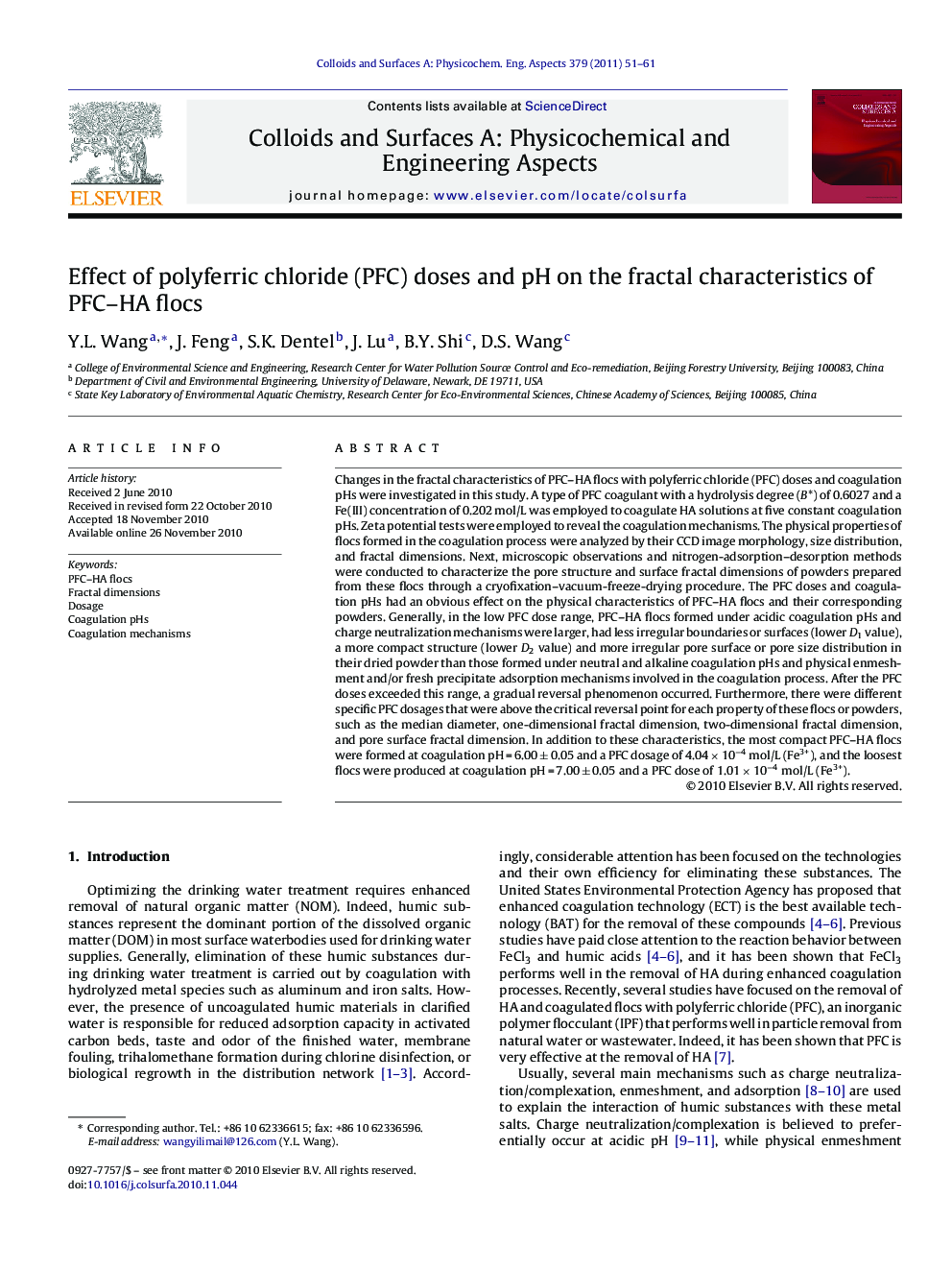| Article ID | Journal | Published Year | Pages | File Type |
|---|---|---|---|---|
| 594916 | Colloids and Surfaces A: Physicochemical and Engineering Aspects | 2011 | 11 Pages |
Abstract
Changes in the fractal characteristics of PFC-HA flocs with polyferric chloride (PFC) doses and coagulation pHs were investigated in this study. A type of PFC coagulant with a hydrolysis degree (B*) of 0.6027 and a Fe(III) concentration of 0.202 mol/L was employed to coagulate HA solutions at five constant coagulation pHs. Zeta potential tests were employed to reveal the coagulation mechanisms. The physical properties of flocs formed in the coagulation process were analyzed by their CCD image morphology, size distribution, and fractal dimensions. Next, microscopic observations and nitrogen-adsorption-desorption methods were conducted to characterize the pore structure and surface fractal dimensions of powders prepared from these flocs through a cryofixation-vacuum-freeze-drying procedure. The PFC doses and coagulation pHs had an obvious effect on the physical characteristics of PFC-HA flocs and their corresponding powders. Generally, in the low PFC dose range, PFC-HA flocs formed under acidic coagulation pHs and charge neutralization mechanisms were larger, had less irregular boundaries or surfaces (lower D1 value), a more compact structure (lower D2 value) and more irregular pore surface or pore size distribution in their dried powder than those formed under neutral and alkaline coagulation pHs and physical enmeshment and/or fresh precipitate adsorption mechanisms involved in the coagulation process. After the PFC doses exceeded this range, a gradual reversal phenomenon occurred. Furthermore, there were different specific PFC dosages that were above the critical reversal point for each property of these flocs or powders, such as the median diameter, one-dimensional fractal dimension, two-dimensional fractal dimension, and pore surface fractal dimension. In addition to these characteristics, the most compact PFC-HA flocs were formed at coagulation pH = 6.00 ± 0.05 and a PFC dosage of 4.04 Ã 10â4 mol/L (Fe3+), and the loosest flocs were produced at coagulation pH = 7.00 ± 0.05 and a PFC dose of 1.01 Ã 10â4 mol/L (Fe3+).
Related Topics
Physical Sciences and Engineering
Chemical Engineering
Colloid and Surface Chemistry
Authors
Y.L. Wang, J. Feng, S.K. Dentel, J. Lu, B.Y. Shi, D.S. Wang,
